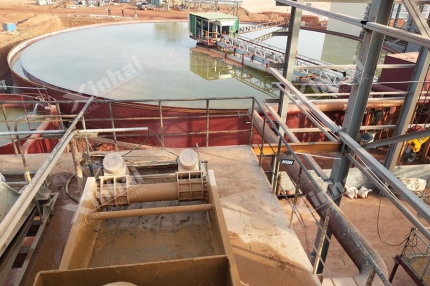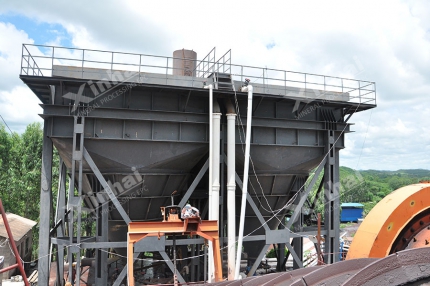There are various types of metal tailings, mainly depending on the specific process of mining and sorting and the type of metal extracted, including iron tailings, copper tailings, aluminum tailings, etc. Different technologies and methods are required for the metal mineral taillings reprocessing and comprehensive utilization to reduce the negative impact of these tailings on the environment. The following will introduce you to five different metal tailings reprocessing technologies.
Use the table of contents below to navigate through the guide:
01Magnetic iron mineral recovery technology from iron tailings
In view of the different iron contents in the gangue minerals in the tailings, the differences in magnetic materials, the large differences in specific gravity, and the difficulty in recovering iron minerals, a combined magnetic and gravity management process that combines strong magnetic separation and shaking tables is adopted. High-grade iron ore concentrate can be produced by using small-diameter strong magnetic separation media and strong magnetic rough washing processes with different magnetic field strengths. This process design takes advantage of the terrain height difference, and the process realizes full gravity flow, reducing energy consumption in the process.
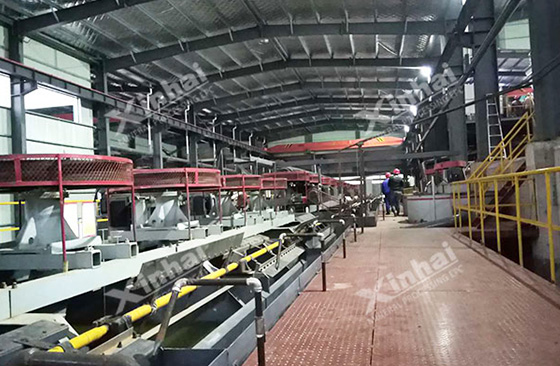
02Gold extraction tailings reprocessing technology
Wet strong and weak magnetic iron separation technology is used for gold extraction tailings to select iron from various weak magnetic mineral tailings. The comprehensive utilization technology of tailings slag after iron dressing is to use a drying process of ultra-fine grinding and high-temperature removal of harmful substances. This technical process is to first carry out proportional slurry mixing, stirring, high-frequency vibration screening and other classification on the gold extraction tailings slag, and then enter the combined magnetic separation equipment to carry out weak magnetic separation, strong magnetic separation and sweeping operations to obtain iron Concentrate. This process has the characteristics of short process flow, high environmental benefits, and convenient production management. It can improve the output of iron concentrate and the efficiency of comprehensive development and utilization of gold tailings slag, and achieve comprehensive analysis and utilization of corporate resources.
03Tin mine tailings reprocessing technology
Tin tailings contain useful minerals such as cassiterite, wolframite, tantalum-niobium minerals, feldspar, quartz, and lepidolite. Because the particle size of these target minerals for tailing selection varies greatly, the content of fine particles is high. Therefore, we need students to use the combined process of gravity, magnetism and flotation according to the mineralogical properties of different minerals in the enterprise and the differences in physical and chemical properties. Gravity separation mainly uses the difference in specific gravity between tin, tungsten, tantalum niobium and other gangue minerals such as feldspar, quartz, mica, etc., and uses gravity separation equipment and technology such as spiral chute and shaking table to separate tantalum niobium and topaz with larger proportions. Other minerals are isolated or pre-enriched. Magnetic separation is based on the magnetic strength of tantalum-niobium ore and the magnetic difference between other minerals. Flotation is to separate tantalum-niobium minerals, feldspar minerals, and lepidolite minerals in stages based on the differences in flotation between these minerals.
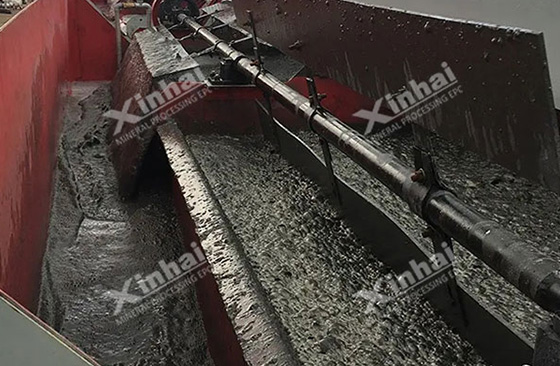
04Tailing mineral tailings reprocessing and magnetic iron recovery technology
The tailings sand is transported to a strong magnetic separator through a belt for rough selection, followed by two stages of grinding. After multiple separations, it enters a high-frequency vibrating screen or cyclone for classification. Rough separation adopts slag separation and strong magnetic separation recovery processes, while fine selection adopts stage grinding, stage magnetic separator, high-frequency vibration screening and concentrator selection processes. This process has the advantages of improving resource utilization and being economical and applicable.
05Comprehensive recovery technology of ferrophosphate titanium polymetallic ores
The tailings go through a three-stage closed-circuit crushing process and then enter the grinding and separation process. The first stage of coarse crushing uses a jaw crusher, and the second and third stages of medium and fine crushing use cone crushers. The grinding and separation process adopts the principle of selecting phosphorus first and then selecting iron, that is, after primary grinding, the ball mill overflow is used to select phosphorus first. The selection adopts primary roughing, secondary beneficiation, and primary sweeping to obtain concentrate. The concentrate product is concentrated, precipitated, filtered and dehydrated to obtain phosphate concentrate with qualified moisture content. After sweeping, the phosphate tailings enter the magnet for iron separation. The iron is separated by a stage grinding and magnetic separation process of two stages of grinding, three stages of magnetic separation, high-frequency vibrating screen, and magnetic agglomeration and gravity separation. After three stages of magnetic separation, the iron is obtained. The refined powder then enters the filtration system and is dehydrated to obtain the iron refined powder. The comprehensive tailings of phosphorus and iron are selected into a titanium plant, and the titanium concentrate can be obtained through two spiral chute gravity separations, fine screening, two shaking table gravity separations, and one strong magnetic separation.
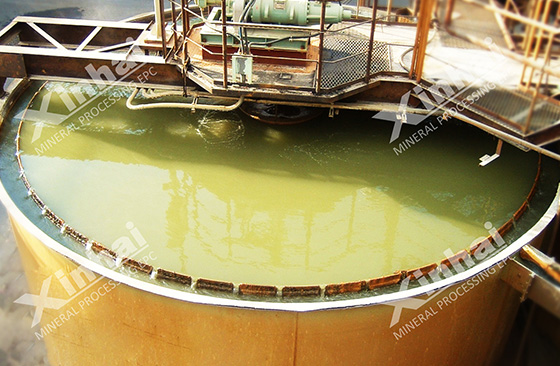
The above are five comprehensive recovery and utilization technologies for different metal tailings reprocessing. These technologies all need to be formulated according to the properties and composition of the ores to be processed. At the same time, in actual production, the tailings reprocessing process needs to be formulated and adjusted based on the requirements. Xinhai Mining recommends conducting mineral processing test analysis to determine the composition and physical and chemical characteristics of the ore in the tailings, and customize and design a reasonable tailings reprocessing process to improve resource utilization efficiency and concentrate recovery rate.


 marketing@ytxinhai.com
marketing@ytxinhai.com  0086 13810327080
0086 13810327080 

































































































 CHAT
CHAT MESSAGE
MESSAGE


